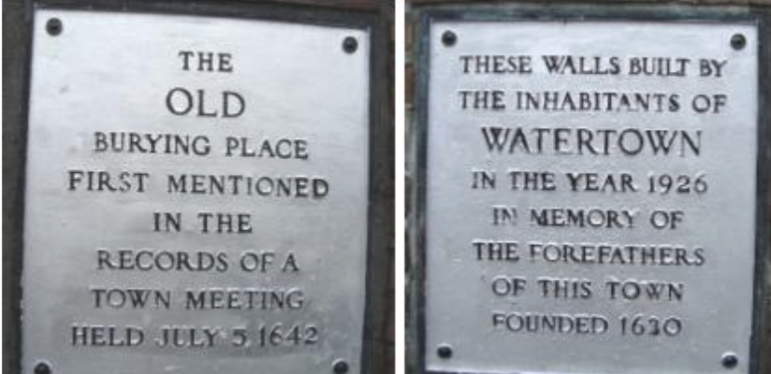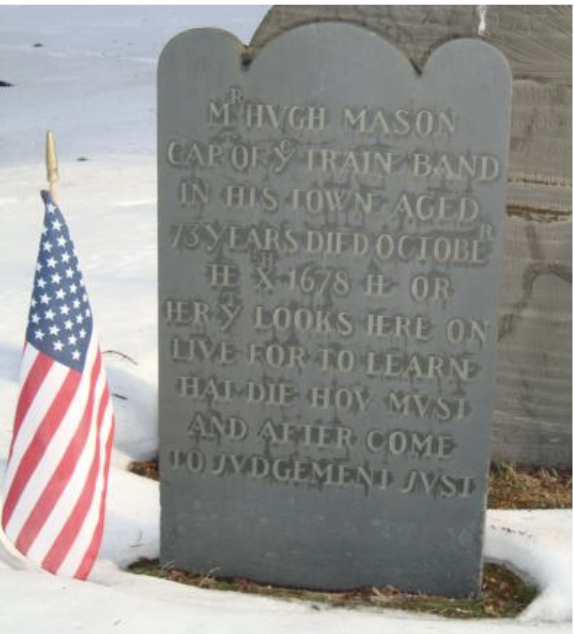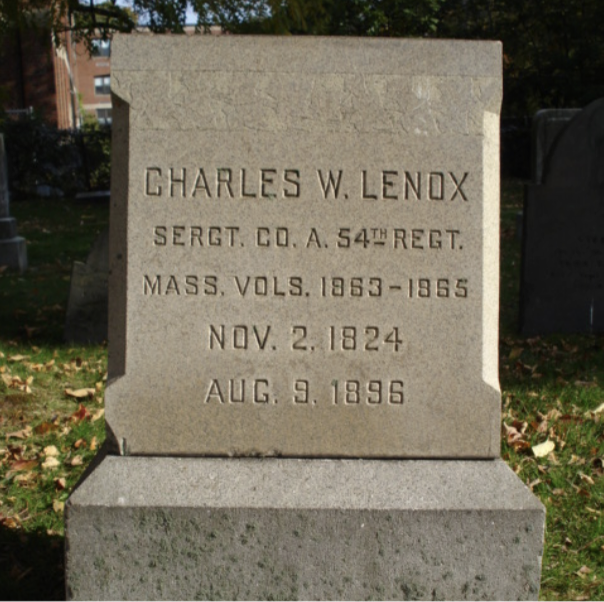
This article is part of a series on local history provided by the Historical Society of Watertown. The introduction to this article was written by Joyce Kelly, Board member of the Historical Society of Watertown. The articles were written by Historical Society President Rev. Edward Rand in 1902 and published in the local newspaper at that time. This was published in our January 2011 newsletter, “The Town Crier.”
Introduction
The following articles were written in 1902 by Rev. Edward A. Rand. Reverend Rand
(1837 – 1903) was the rector of the Church of the Good Shepherd and a founding member of the
Historical Society of Watertown. He served as its second President from 1891-1903 and was an
ardent supporter and researcher of Watertown history.
The Historical Society of Watertown was formed in 1888. During the early years candidates for membership into the Society were required to “present a paper, or to make some other such contribution as will advance its objects.” The presented essays were printed in the local newspaper. Rev. Edward Rand had the foresight to save them in scrapbooks, along with articles, letters and other memorabilia. This 5-volume scrapbook is housed at the Watertown Free Public Library.
He has been credited with preserving much of the town’s past in his writings, scrapbooks, and efforts at memorializing sites with historical plaques. In addition to his Historical Society essays and his religious writings, Rand wrote a long list of children’s books: including Drummer Boy of the Rappahannock, Fifer Boy of the Boston Siege (which we recently acquired), Whistle Down the Alley, Margie at the Harbor Light, and many more.
The following three articles, which were published in the local newspaper, are about the Watertown cemeteries.
THE OLD FOLKS’ REST
What we so often speak of as “the Arlington Street Cemetery,” which I love to call “the Old Folks’ Rest” is fittingly honored and carefully kept as Watertown’s oldest cemetery. I know of no ancient grave yard that is in a more satisfactory condition. The ground has been smoothly graded and grassed, and, in summer it is kept like a lawn. The cedar trees there are a favorite type of ancient
cemetery forestry.
How ancient is this cemetery? Harris, in his “Ancient Epitaphs” makes this assertion about the burial ground. “It was in use as early as the year 1642.” [Note: Rand is referring to William Thaddeus Harris’ book published in 1869. Visit the Genealogy page on the Historical Society’s website www.HistoricalSocietyOfWatertownMA.org for a link to a website with these epitaphs and a link to a listing of people buried here, as well as the numbered map discussed below.]
Let us now turn to our most interesting and valuable Town Records, recently published. The first volume, the eighth page, 1642. An entry reads as follows:
“Ordered, that Hugh Mason, Thomas Hastings and John Shearman are appointed to set up a sufficient fence about the burying place with a 5-foot pole and 2 railes well nailed by the 15th of the 2 moneth, and the Towne to pay them for it.”

The inference is that the cemetery was one already in use, but of course the exact date of first occupation it would be difficult to determine.
There must be many unmarked graves, and where a grave has been marked how many instances of broken stones have been found in old grave yards, while some stones slowly, steadily are sinking into the ground.
The oldest stone in the cemetery is that of a child, a little child leading the silent procession. “Sarah Haman” (for Hammond) who, at the age of eight died on the 12th of September, 1674. We find William Shattuck’s burial mentioned as occurring in 1672. The stone though over his grave was set up in 1753.
This is the resting place of progenitors and it is well to know by those who carry that family name, that William Shattuck is the progenitor of the Shattuck families in America. Next to the Haman stone comes that of Mehetable Gearfield. She was the wife of Benjamin Gearfield, among whose descendants was our President Garfield.
[Note: Those who attended our November “Then and Now” program will recall that this is the head stone that was being looked at by President Coolidge and his entourage in 1929.]

Harris says of Mehetable Gearfield’s stone: “This is one of the few in the old grounds bearing impress of native talent corresponding closely with those of Samuel and Thomas Bridge (1673) of Cambridge, and the one of Sarah Haman in this ground, all doubtless cut by one hand.”
In the second volume of the published Watertown Records is an appendix that gives a plan of our old cemetery. It gives the location of the graves, which are numbered, and this plan is succeeded by a list of all the burials as far as can be obtained. Mr. and Mrs. Charles A. Stearns of the Watertown Historical Society prepared this index, and their son, Edward B. Stearns, made the
plan.
[Note: Published volumes of the original Watertown Records are housed at the Historical Society’s Edmund Fowle House and the Watertown Free Public Library.]
Mr. Albert M. Davenport has made photographic copies of memorial stones, and William Thaddeus Harris published, over thirty years ago, the epitaphs of the stones in this cemetery. Some of these epitaphs are of exceeding interest.
Old captains are here remembered: Among them is Captain Hugh Mason, who in his day marched at the head of Watertown’s famous Train Band. These words were on the foot stone at his grave:
He or
Her y’t Looks Here on
Live for to learne
That Die Thou Must
And after come
To Judgement just.

The date of Captain Hugh Mason’s stone is 1678. A later stone is that of Captain Nathaniel Barsham, who died in 1716 and was remembered as one “Who, after he had served his own Generation by ye Will of God; Using Well the office of a Deacon fell asleep.”
His wife “long abounded in acts of Sobriety, Righteousness and Piety.” Over the grave of Jonas Bond is this panegyric:
“Jonas Bond Esqr, who was
Called by God to serve ye Publick
Both as a Lieutenant Colonel of
a Regiment of Militia, And a
Justice of the Peace; And was
Careful to discharge his Trusts
with Fidelity, Zeal, and Courage
Who was a man of Unaffected
Piety, which was attended with
All those vertues that are
Resquisite to accomplish a Christian
Who was a kind husband, a ten-
der Father, a steady Friend, and
a hearty lover of good men”
There are other epitaphs of much interest, such as that of “ye precious dust of Rev. Thomas Bailey, A painful preacher”
Those, too of Rev. John Sherman and Rev. Henry Gibbs and wife, whose bodies lie under a Latin epitaph crown and also the Rev. John Bailey’s wife, thus described on stone:
“Pious Lydia made and given
By God as a most meet
Help to John Bailey
Minister of ye Gospell.
Good Betimes X Best at Last
Lived by Faith X Dyed in Peace
Went off singing X Left us weeping
Walkt with God till Translated
in ye 39 Year of her Age
Read her Epitaph
in Prov. 31, 10, 11, 12, 28, 29, 30, 31.”
This old cemetery, its blue stones, its green cedars, its smoothly-shaven sward must be visited to be appreciated.
Watertown should be congratulated that it has cemeteries with distinctive features. Mount Auburn is one of the finest garden cemeteries of our land and we must never forget that the most of Mount Auburn is in Watertown, not Cambridge. The Old Folks’ Rest has a distinctive feature in that it is an ancient burial place. The Common Street cemetery has a very marked, patriotic character, as the Soldiers’ Rest.
THE SOLDIER’S REST
To Common Street Cemetery, most fittingly may be given the title, “The Soldier’s Rest.” When we see the little flags fluttering above the quiet graves, do we realize how many heroes of other days rest there? Sixty graves were decorated this year, and fifty-five were the graves of soldiers of the Civil War. The Sons of the American Revolution have marked a few graves of Revolutionary soldiers.

It would be difficult to find another cemetery that in the same space has as many soldiers’ graves. As the years pass on, this will give the place a growing prominence in the regard of the town. The cemetery should receive treatment in harmony with its high character. Misshapen and withering trees should be removed, and an ornamental growth take their place. Flowering shrubs should be set out. Some surfaces should be regraded. A hedge should screen, yet beautify it. A few years treatment of it will turn it into a garden, and it is hoped that the late desecration, whether in
malevolence or stupid thoughtlessness, will never be repeated.
HAGAR LANE AND THE NEW CEMETERY
We are told that picturesque Hagar Lane is to be kept as a leafy entrance to the new cemetery, fifteen feet being allowed for a roadway which will wind on amid the old picturesque growth by the roadside. A beautiful entranceway will be this pretty lane. We wish it led to a cemetery with a more fitting name for a resting-place of our dead. Something more suggestive of a quiet, leafy, seclusion than “Ridgelawn” ought to be selected. Ridgelawn is just a gravelly or sandy projection in a lawn surface. One may wonder how Hagar Lane received its name. In the second volume of the published Town Records, the names of some of the homestall occupants are mentioned on the map of 1720. “Sarah Hagar” is given as the occupant of a lot in that part of the town, and probably the family name as given to the pretty lane.
This map shows how many had homes in the neighborhood. Hon. H. R. Skinner, in a paper before the Historical Society in 1891, refers to the Bigelows who had the fifth and sixth lots on the north side of Warren Street. Other families of prominence were in the vicinity. On the near corner of Lexington and Orchard streets was the meeting house associated with the faithful care of Parson Angier. We are glad that the quarter repeatedly honored, once more is taking such a front position and that beautiful Hagar Lane will be a winding gateway to the new cemetery.